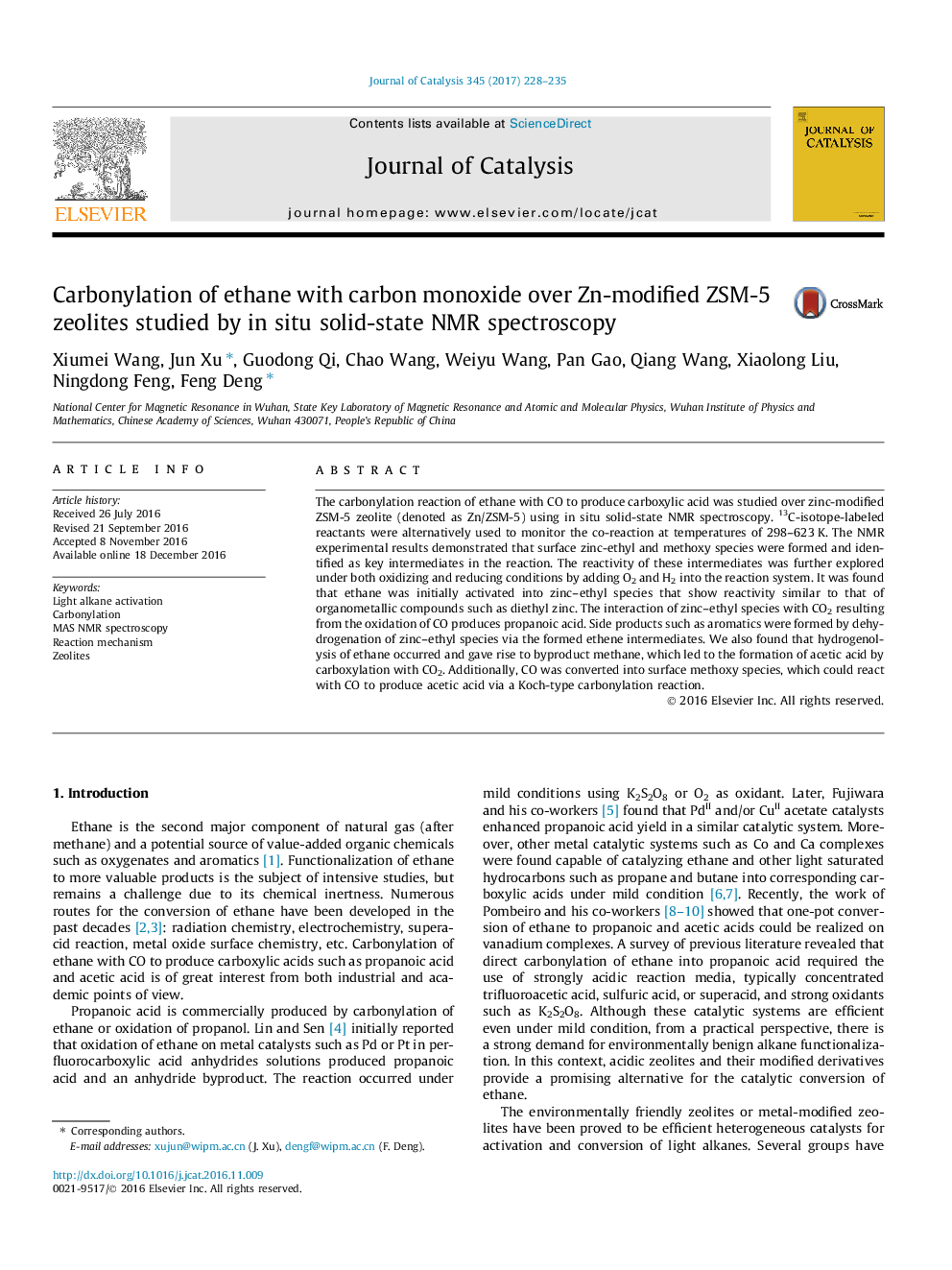| Article ID | Journal | Published Year | Pages | File Type |
|---|---|---|---|---|
| 6455663 | Journal of Catalysis | 2017 | 8 Pages |
â¢The mechanism of ethane co-reaction with CO to produce carboxylic acids is revealed.â¢Surface zinc-ethyl and methoxy species are identified as key intermediates.â¢The zinc-ethyl species shows reactivity similar to that of organometallic compounds.â¢Redox conditions affect the activation of ethane and CO.â¢Bifunctionality of ZnZSM-5 zeolite is essential for the co-reaction.
The carbonylation reaction of ethane with CO to produce carboxylic acid was studied over zinc-modified ZSM-5 zeolite (denoted as Zn/ZSM-5) using in situ solid-state NMR spectroscopy. 13C-isotope-labeled reactants were alternatively used to monitor the co-reaction at temperatures of 298-623Â K. The NMR experimental results demonstrated that surface zinc-ethyl and methoxy species were formed and identified as key intermediates in the reaction. The reactivity of these intermediates was further explored under both oxidizing and reducing conditions by adding O2 and H2 into the reaction system. It was found that ethane was initially activated into zinc-ethyl species that show reactivity similar to that of organometallic compounds such as diethyl zinc. The interaction of zinc-ethyl species with CO2 resulting from the oxidation of CO produces propanoic acid. Side products such as aromatics were formed by dehydrogenation of zinc-ethyl species via the formed ethene intermediates. We also found that hydrogenolysis of ethane occurred and gave rise to byproduct methane, which led to the formation of acetic acid by carboxylation with CO2. Additionally, CO was converted into surface methoxy species, which could react with CO to produce acetic acid via a Koch-type carbonylation reaction.
Graphical abstractDownload high-res image (77KB)Download full-size image
